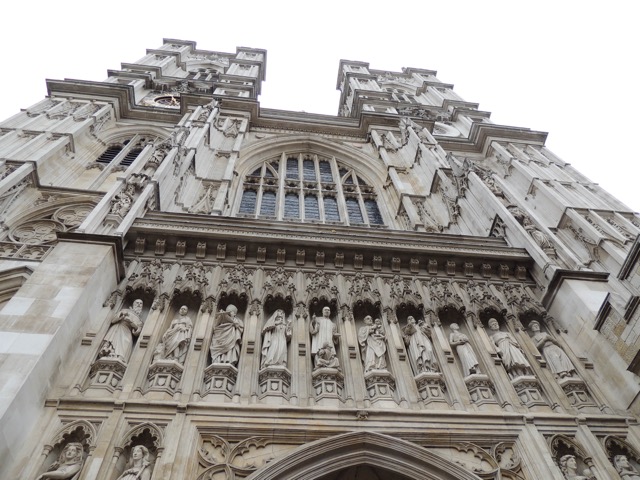Difference between revisions of "Gothic style"
From Londonhua WIKI
| Line 25: | Line 25: | ||
==High Gothic== | ==High Gothic== | ||
<br> | <br> | ||
| + | This period is often called "decorated Gothic" as it had the same structural elements of the previous style, but added large amounts of elaborate decorations. The look and feel of the building took precedence over the structural support of the building. This era bithed many of the exterior decorations such as pinnacles, molding, and window tracery.<ref>Gothic Architecture: Characteristics, History. (2017). Visual-arts-cork.com. Retrieved 9 June 2017, from http://www.visual-arts-cork.com/history-of-art/gothic-architecture.htm</ref> | ||
| + | |||
==Late Gothic== | ==Late Gothic== | ||
<br> | <br> | ||
Revision as of 13:20, 9 June 2017
Gothic Style
 | |
| Westminster Abbey | |
|---|---|
| Location: | Westminster, London |
Overview
This article will talk about the Gothic architectural style and its key characteristics. Gothic architecture includes three major different styles as it changed over time: Early Gothic, High Gothic, and Late Gothic. [1]
Contents
Background
During the Middle Ages Gothic architecture began its rise to popularity through its use in cathedral construction adding more depth and fragility to the appearance of the buildings. The new Gothic style also allowed for a drastic change in the lighting of the cathedral by using many, often very large, windows. [2]
Early Gothic
The early Gothic period exemplifies the traditional elements of the Gothic style including ribbed vaulting, flying buttresses and pointed arches. The first two of those elements allowed for the massive scale of the Gothic buildings by distributing the weight of the roof entirely onto the walls of the building. A popular design element of this era was the apse, a semicircular section that bulged out from the main form. The apse contained the high alter that was encircled by the ambulatory.[3]
High Gothic
This period is often called "decorated Gothic" as it had the same structural elements of the previous style, but added large amounts of elaborate decorations. The look and feel of the building took precedence over the structural support of the building. This era bithed many of the exterior decorations such as pinnacles, molding, and window tracery.[4]
Late Gothic
Image Gallery
References
- ↑ Gothic Architecture: Characteristics, History. (2017). Visual-arts-cork.com. Retrieved 9 June 2017, from http://www.visual-arts-cork.com/history-of-art/gothic-architecture.htm
- ↑ Gothic Architecture: Characteristics, History. (2017). Visual-arts-cork.com. Retrieved 9 June 2017, from http://www.visual-arts-cork.com/history-of-art/gothic-architecture.htm
- ↑ Gothic Architecture: Characteristics, History. (2017). Visual-arts-cork.com. Retrieved 9 June 2017, from http://www.visual-arts-cork.com/history-of-art/gothic-architecture.htm
- ↑ Gothic Architecture: Characteristics, History. (2017). Visual-arts-cork.com. Retrieved 9 June 2017, from http://www.visual-arts-cork.com/history-of-art/gothic-architecture.htm